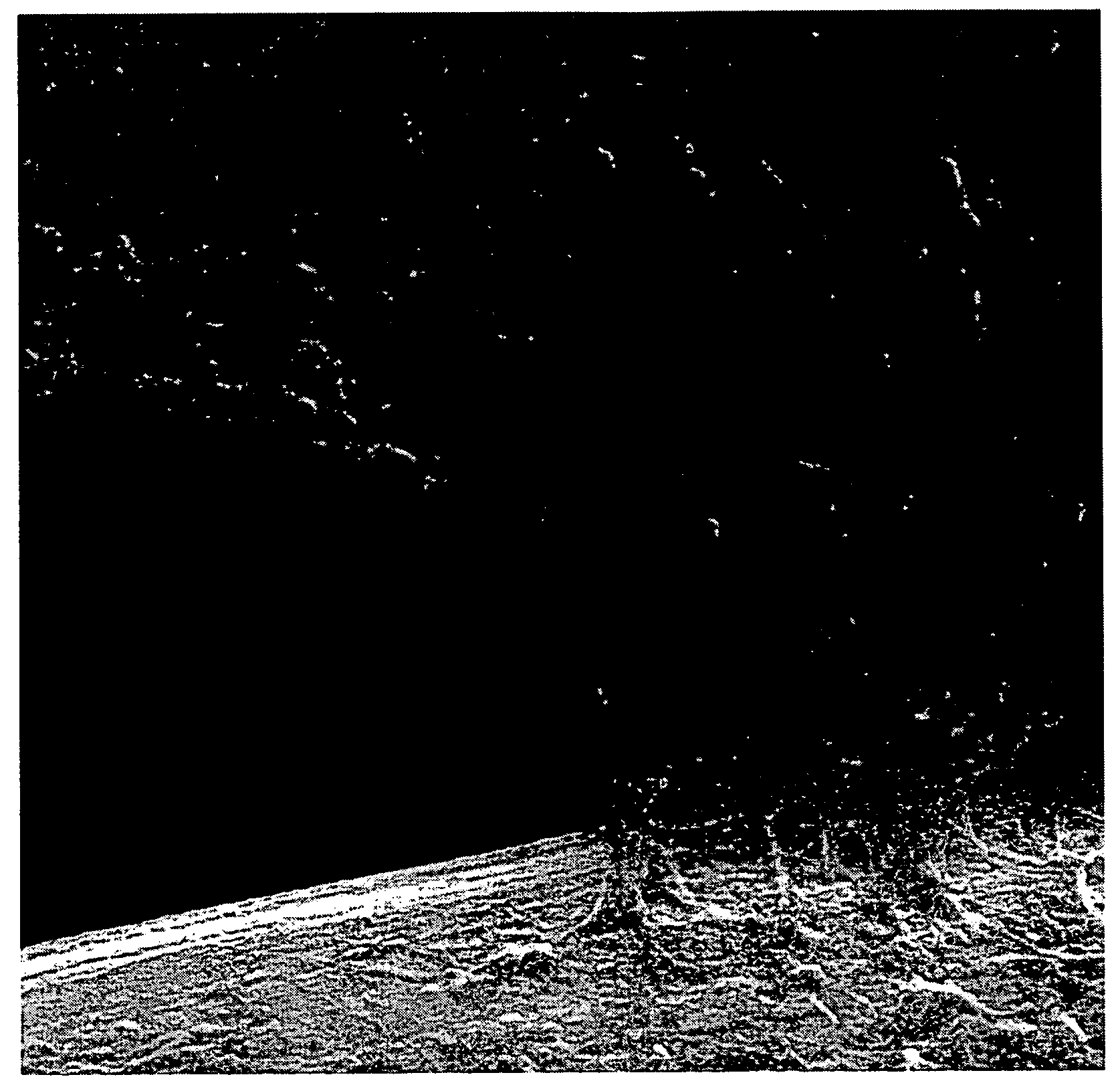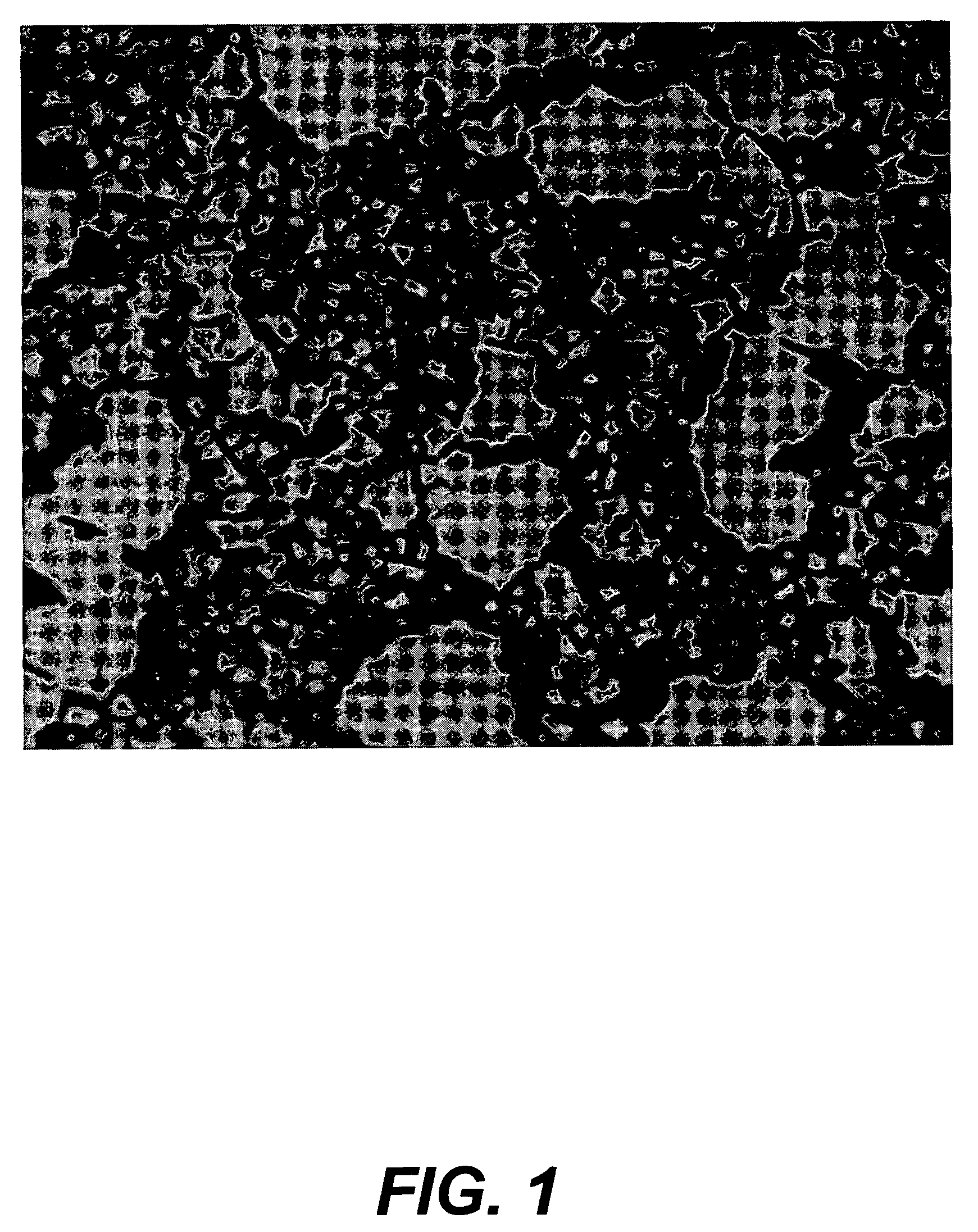Purification of fluids with nanomaterials
a technology of nanomaterials and fluids, applied in the field of nanostructured materials, can solve the problems of insufficient pre-treatment of liquids, and byproduct risks, and achieve the effect of reducing or substantially reducing the need for sulfites
- Summary
- Abstract
- Description
- Claims
- Application Information
AI Technical Summary
Benefits of technology
Problems solved by technology
Method used
Image
Examples
example 1
Fabrication of an Activated Defective Nanostructured Material
[0173]An activated nanostructured material was made from commercially available purified carbon nanotubes. These nanotubes were placed in a 50 ml conical centrifuge tube to which concentrated nitric acid was added to a volume of 45 ml. The tube was shaken vigorously for 2–3 minutes to mix the acid and nanotubes, and then centrifuged at 2,500 RPM for five minutes to pellet the nanotubes.
[0174]A yellow supernatant was decanted and the nitric acid wash was repeated. The carbon nanotubes were then washed 2–3 times with water to reduce the acid concentration below a point at which the acid did not react with the isopropanol used in the following steps.
[0175]100 mg of the nitric acid washed / water rinsed carbon nanotubes were next added to 400 ml of commercially available neat isopropanol and ultrasonicated in a Branson 900B ultrasonicator 80% power until the carbon nanotubes were well dispersed (about 10 minutes). The mixture wa...
example 2
Purification Test of Nanostructured Material with E. coli Bacteria
[0180]This example describes a purification test on water contaminated with E. coli bacteria stock culture, that was purchased from American Type Culture Collection (ATCC).
[0181]A bacteria assay was conducted by challenging the carbon nanotube nanostructured material, made in accordance with Example 1, with a challenge of ((4×107±2×107 colony forming units per ml (cfu / ml)) of E. coli stock culture ATCC #25922, that was first reconstituted. Using a sterile biological loop (commercially available) a loop of the reconstituted stock was removed and streaked on a commercially available blood agar plate and incubated for 12–18 hours at 36° C. The culture was then removed from the incubator and examined for purity.
[0182]Using a sterile biological loop (commercially available) a loop of the incubated culture was removed and placed in 10 ml of sterile commercially available Tryptic soy broth (Remel cat. No. 07228). E. coli was...
example 3
Chemical Analysis of Sterilized Post-Challenge Filtrate
[0185]This example describes the chemical analysis of filtrate from an E. coli challenge test, performed as described in Example 2, on the carbon nanotube nanostructured material, made in accordance with Example 1. This example provided verification of purification through destruction of E. coli bacteria passing through the inventive carbon nanotube nanostructured material. Evidence of purification through the destruction of the contaminant, (E. coli bacteria) was established by the presence of DNA and protein in the challenge filtrate.
[0186]A challenge test was run in accordance with Example 2, except that the composition of the challenge material was 1×108 cfu / ml of E. coli. A total of 100 ml (total=1×1010 cfu) of this challenge solution was drawn through the carbon nanotube, nanostructured material using with ½ in Hg of vacuum pressure. A control filtrate was obtained by passing the E. coli challenge filtrate through a commer...
PUM
| Property | Measurement | Unit |
|---|---|---|
| diameter | aaaaa | aaaaa |
| diameter | aaaaa | aaaaa |
| temperature | aaaaa | aaaaa |
Abstract
Description
Claims
Application Information
 Login to View More
Login to View More - R&D
- Intellectual Property
- Life Sciences
- Materials
- Tech Scout
- Unparalleled Data Quality
- Higher Quality Content
- 60% Fewer Hallucinations
Browse by: Latest US Patents, China's latest patents, Technical Efficacy Thesaurus, Application Domain, Technology Topic, Popular Technical Reports.
© 2025 PatSnap. All rights reserved.Legal|Privacy policy|Modern Slavery Act Transparency Statement|Sitemap|About US| Contact US: help@patsnap.com



